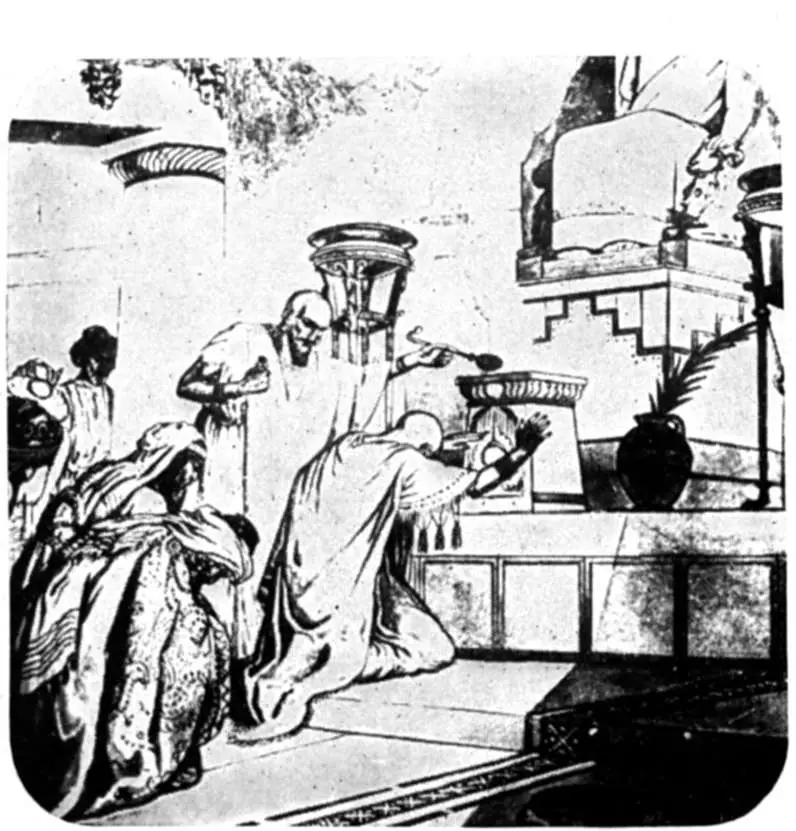Religion and Gods
How did people worship?

- In ancient Mesopotamia each city-state had its own god or goddess and their family. People believed that the gods were actually present in their cities, and they built temples called ziggurats for the gods to live in.
- The typical temple had three rooms with impressive decoration. The god could be found in the room closest to the centre of the building. The god was in the form of a statue. People would also leave behind statues in the temples. The idea was that these statues would constantly pray on their behalf.
- Every day the priests would wash the god statue and even clothed and fed it. There would be ceremonies with hymns and prayers. There would be singing and dancing and feasts on special days.

Public display
- The statues of the gods were carried around the cities once a year in a sort of festive parade. One of the best known of these festivals was the New Year parade in Babylon. The statue of the Babylonian god Marduk would be taken out of its temple to a place beyond the city walls. The people would read stories in respect of the god and his mighty powers.
- Gods formed part of a family so statues of sons would be taken to other cities to visit their fathers.
- There were also many smaller places of worship in the city-states. Ordinary people would go to these temples with offerings. An offering is a gift to show loyalty or devotion to a god. In Mesopotamia people would offer food, beer, wine and water or even animals to sacrifice.

Religion in the family
- Religion was also important outside the temples. The ancient Mesopotamians believed that, even after one of their family members died, the spirit of that person still existed and required care and respect. Family members were buried under their houses and even fed in a similar way to the city gods. They feared that if they did not show this respect the family spirit might turn on them.

Who were the most important gods?
- As every city-state had its own god, there were hundreds of gods in Mesopotamia. Mesopotamia consisted of different regions, different tribes and empires, which were prominent at different times. The importance of the gods was also related to place and tribe.

Sumer
- The most important Sumerian God was Enlil. Enlil’s temple was called the “Mountain House” which was in the city-state of Nippur the religious heart of Sumer.
- As the most important god of Sumer, Enlil decided who would become king. Enlil’s name means “Lord of the Air and Wind”. Enlil was regarded as having control over the weather. As a result, people would pray to him to provide the right weather for their harvests.

Babylon
- Marduk was the most important god and protector of the city of Babylon. People believed that Marduk defeated the evil goddess Tiamat to bring peace and order to the universe. Marduk is associated with healing, justice and compassion. The Babylonian people thought that Marduk had created the world and all human beings. They believed that the other gods respected Marduk and were behind the construction of his temple in Babylon.
- Marduk is associated with two symbols: a spade and a snake-dragon.

Assyria
- Ashur is the chief Assyrian god and is known as the god of war and empire.
- The Assyrians, who focussed on military victories as a priority, believed that cruel acts of war were necessary to impress their god and win his favour.
- In sculptures and other artistic works, Ashur looks similar to Assyrian soldiers with his horned cap.
- He can often be seen on a creature called on a snake-dragon and had his own symbols of a winged disc and a bow and arrow.

Persian religion
- The Persian Empire had a very different form of religion. It was called Zoroastrianism and was established by an Iranian called Zoroaster.
- This religion differed from the previous Mesopotamian belief systems because Zoroastrians believed in just one god rather than a variety of local gods. Their god was called Ahura Mazda and people believed that he was the creator of the world and everything good.
- One of the lasting legacies of Zoroastrianism that remains with us to this day is that idea of a constant struggle between good and evil going on around us.



